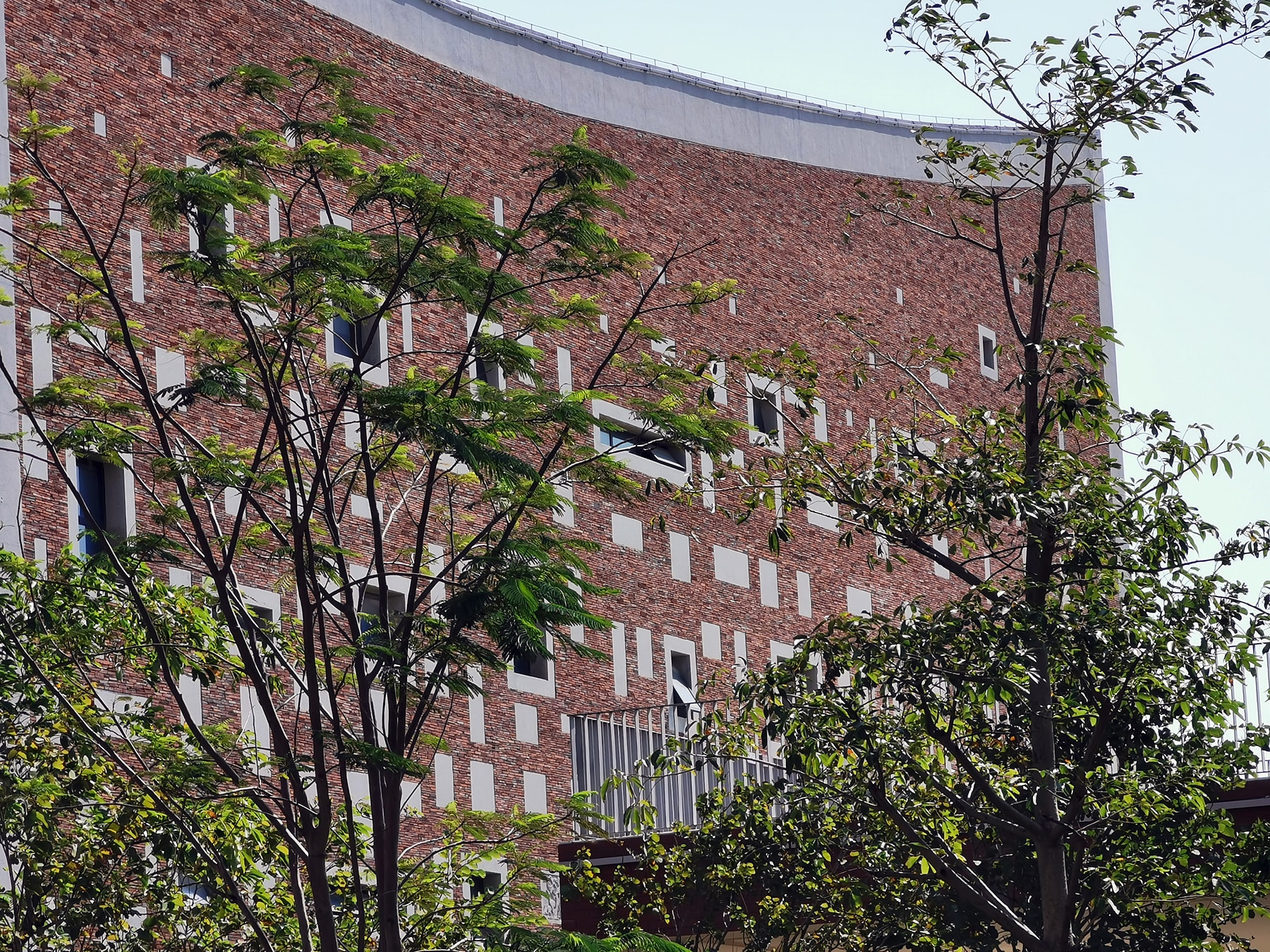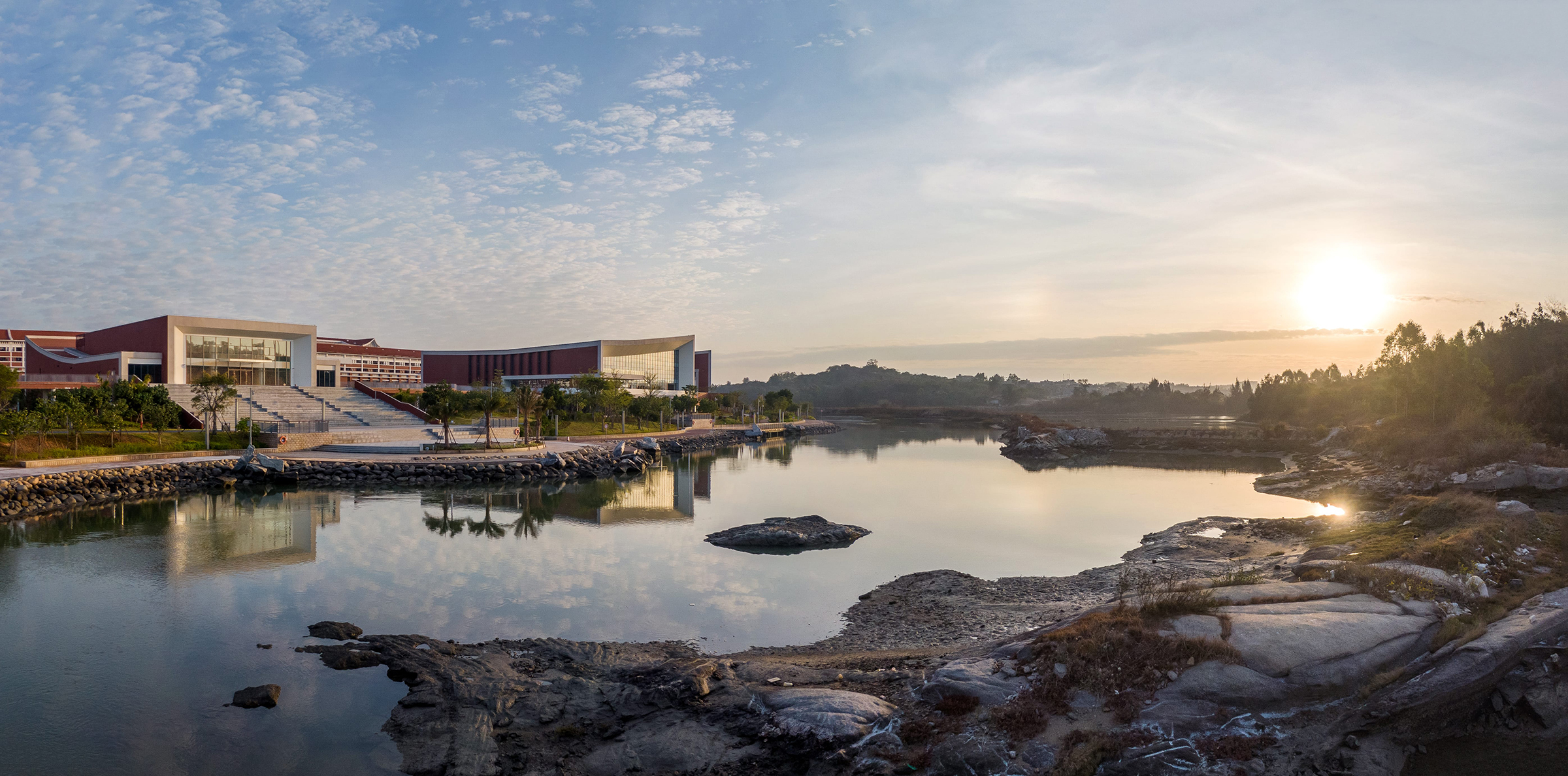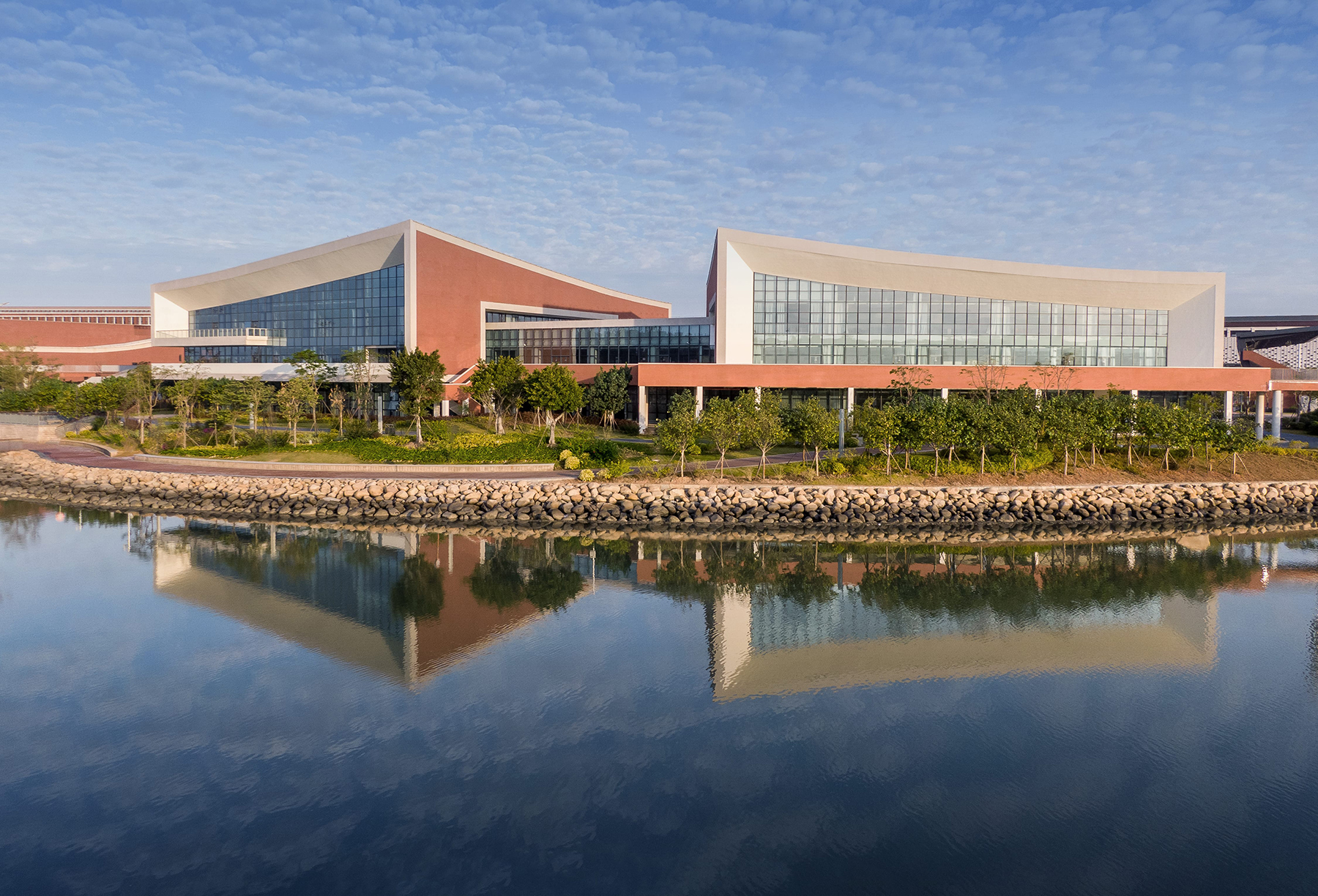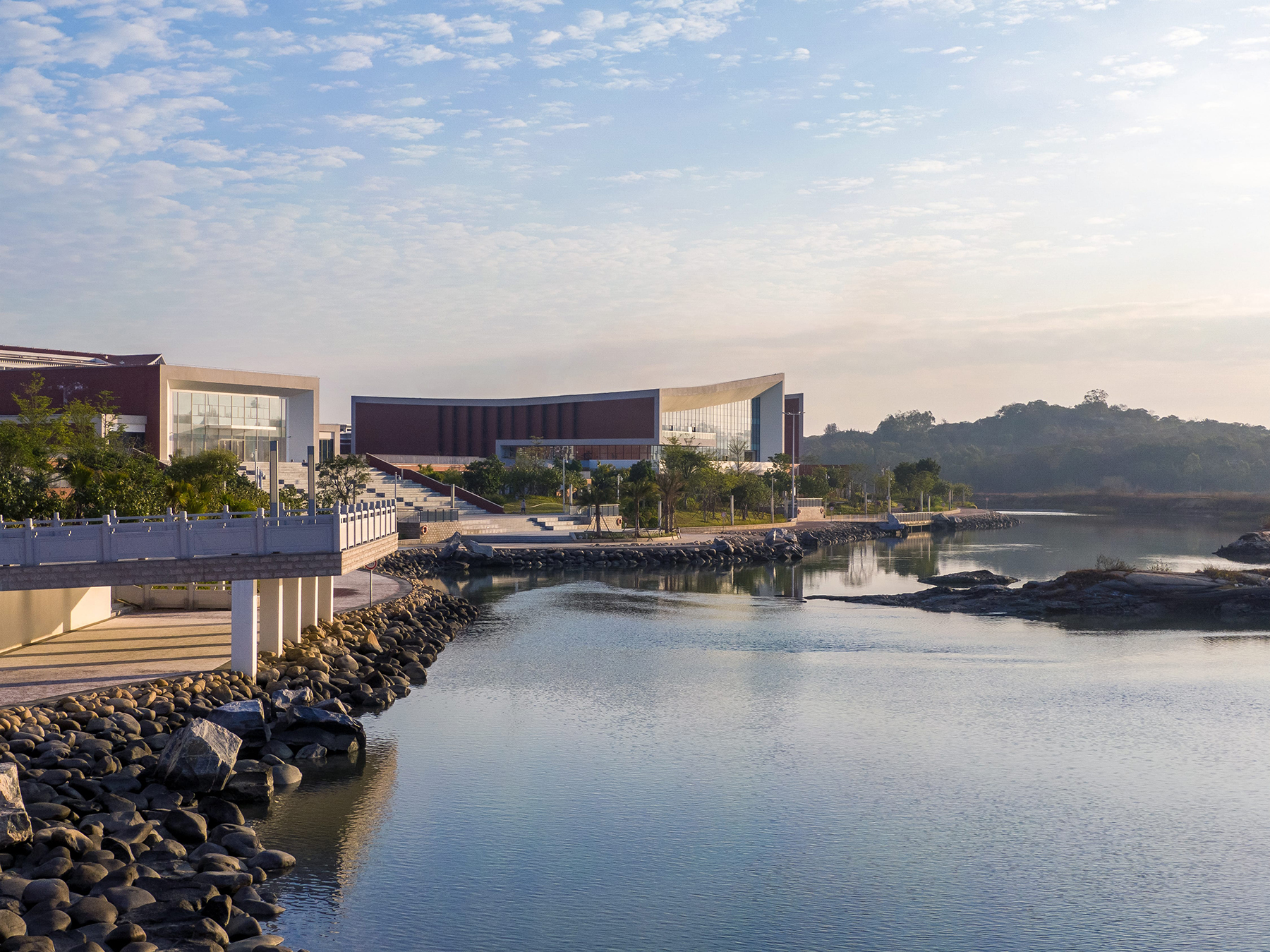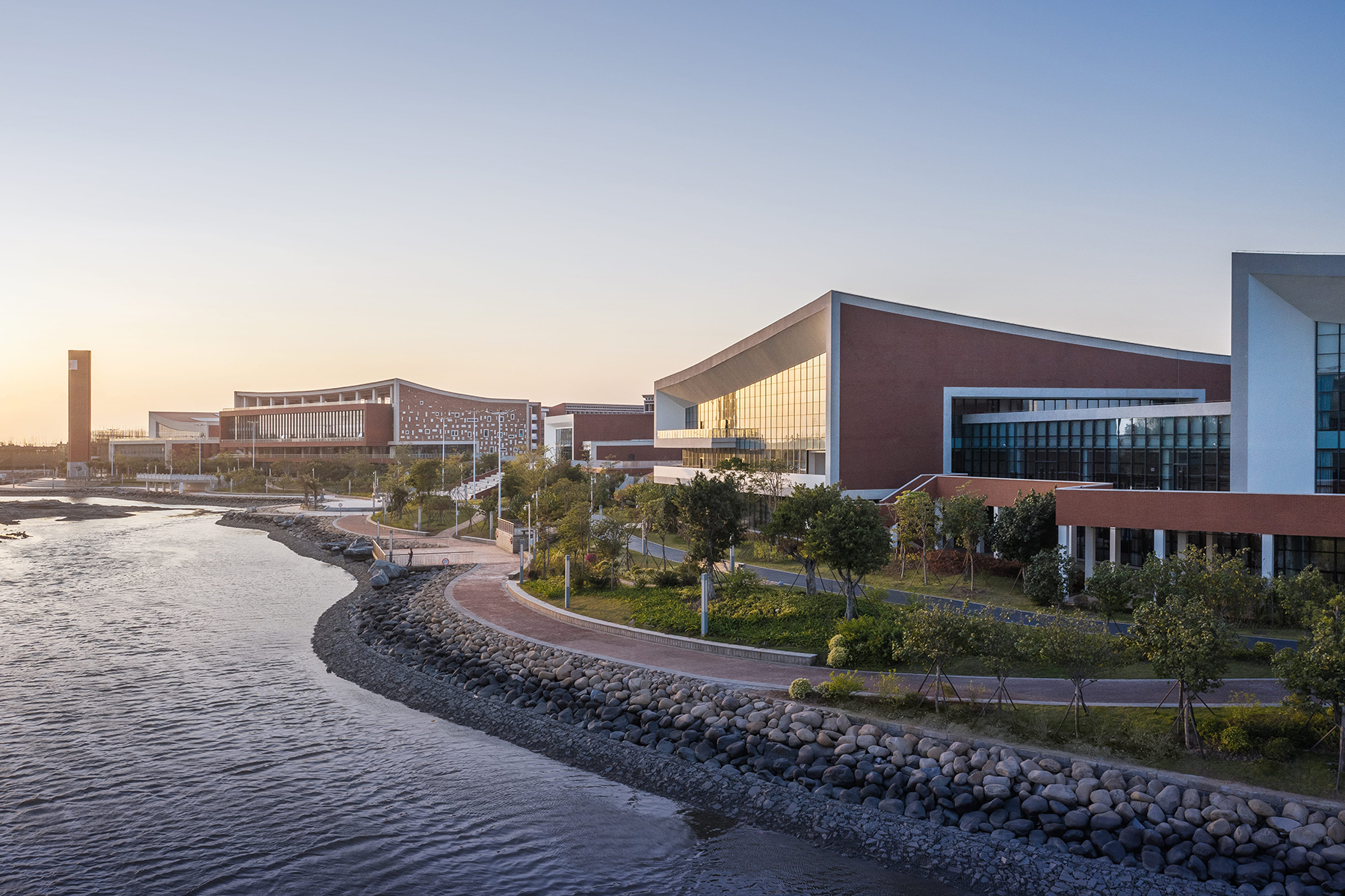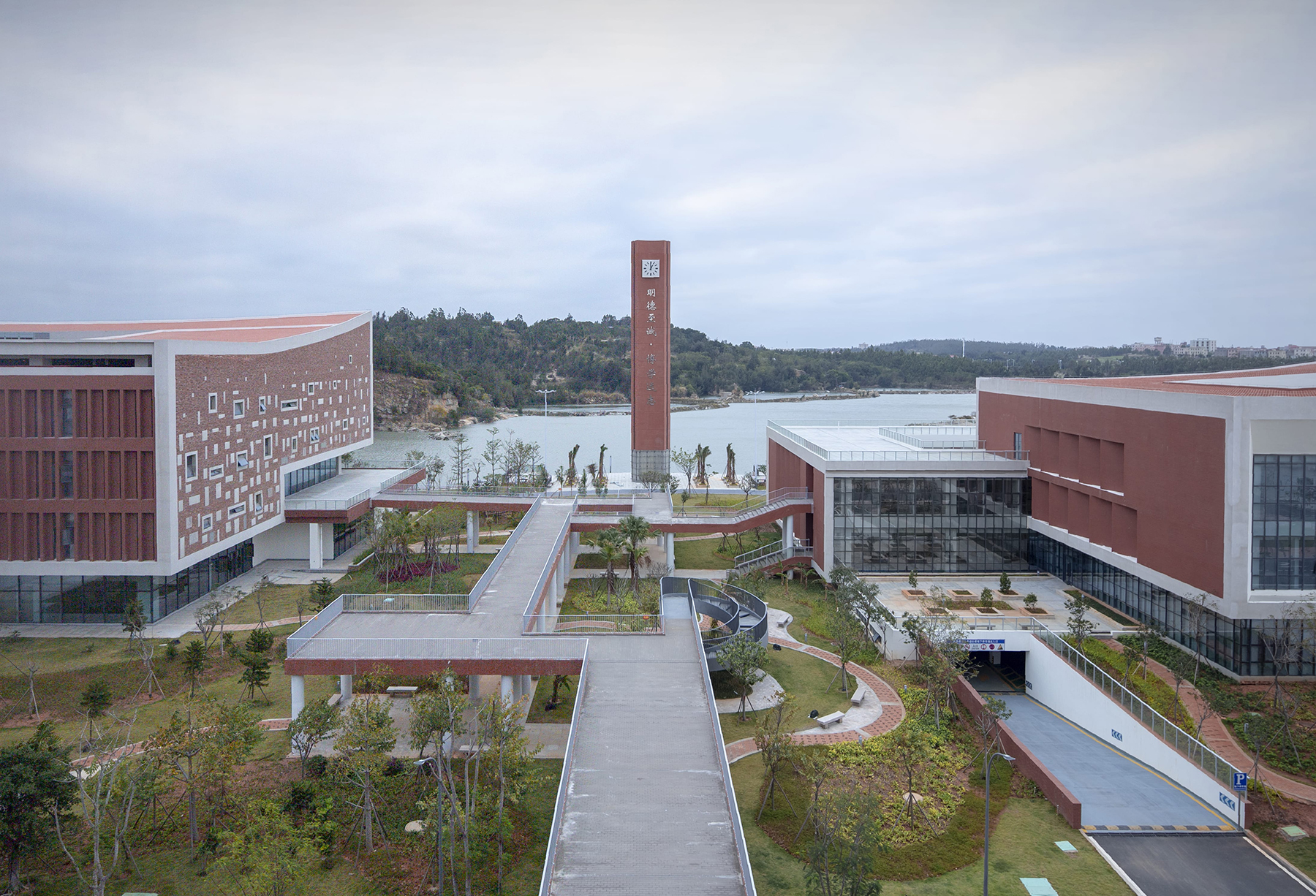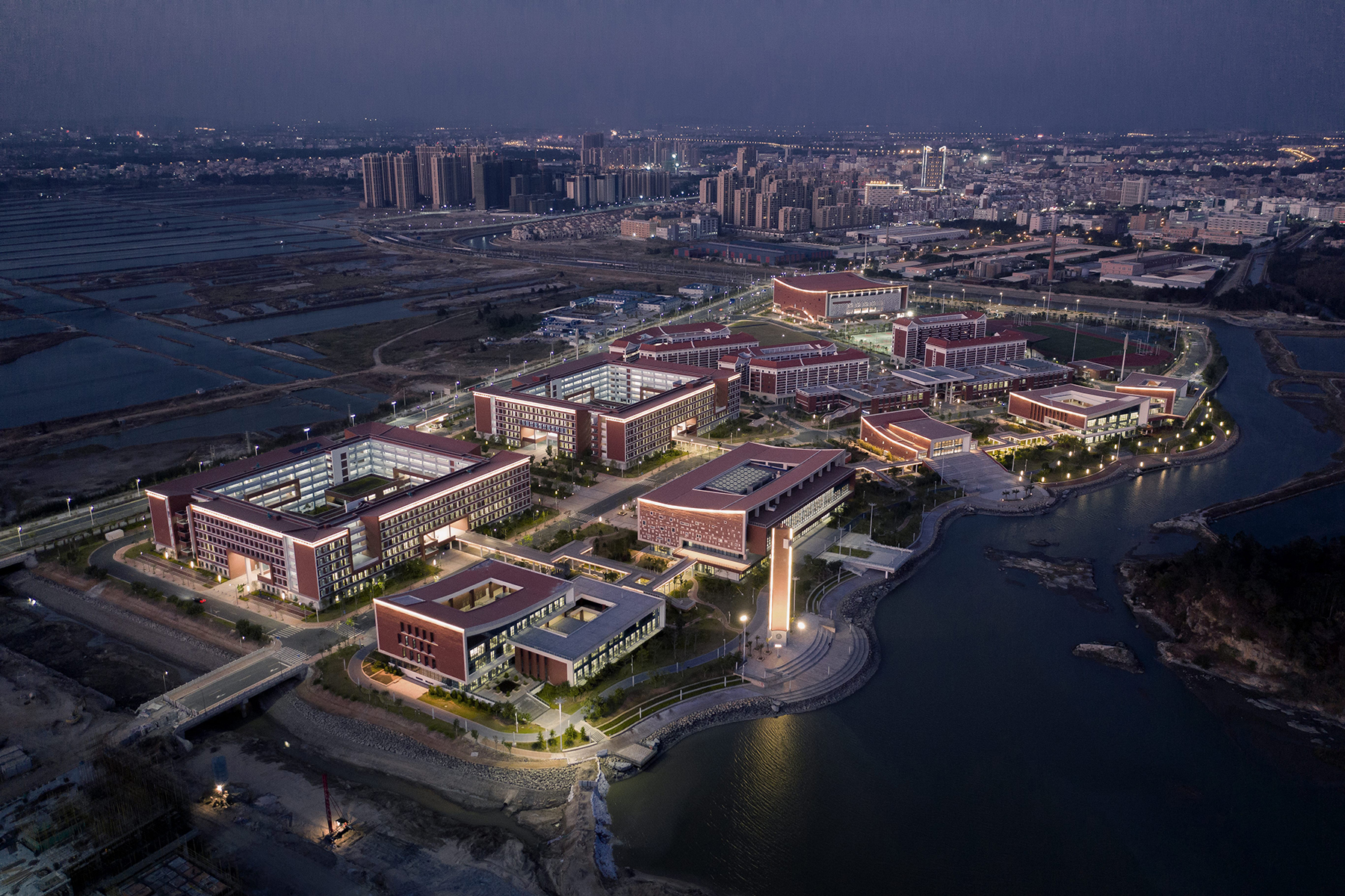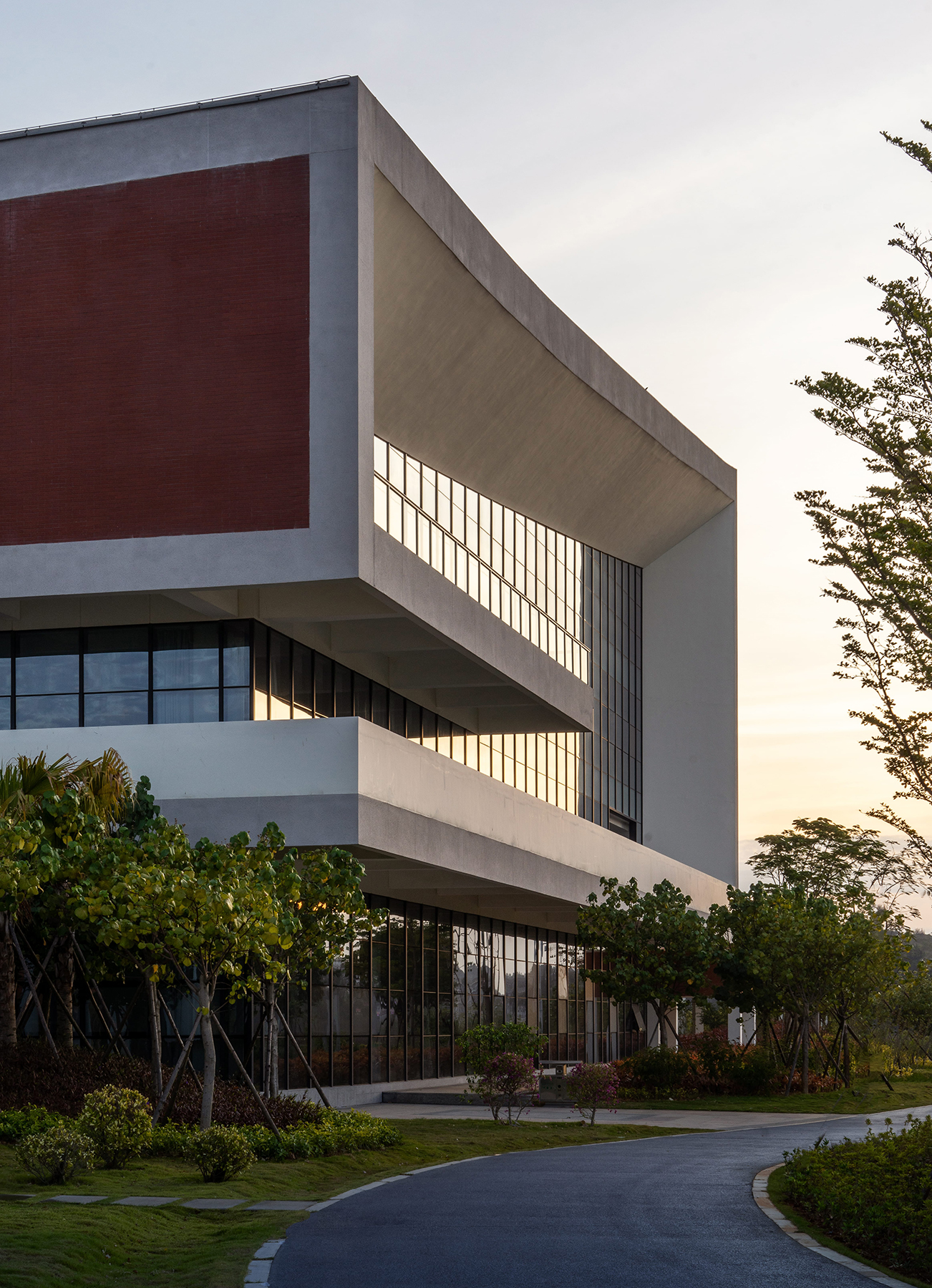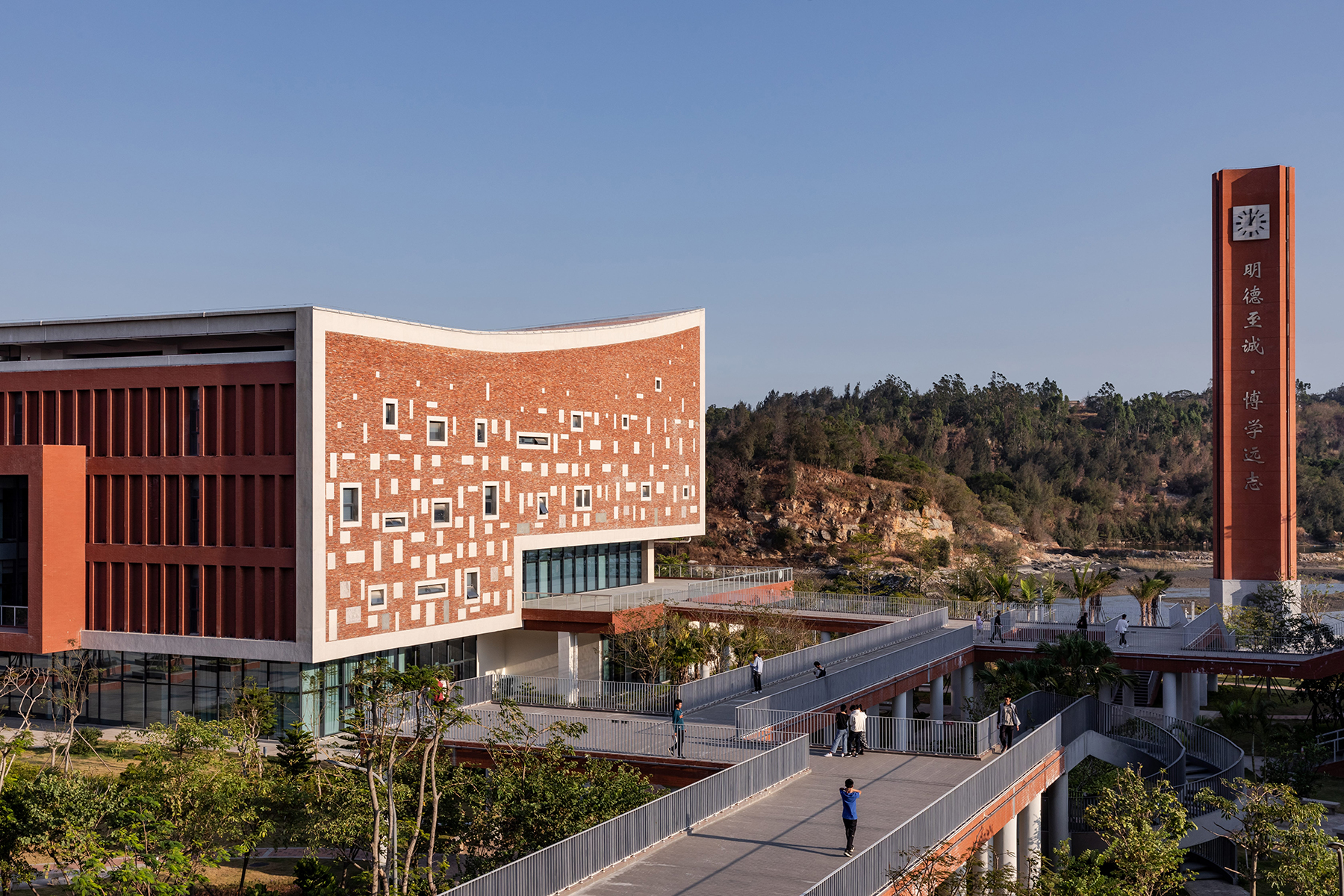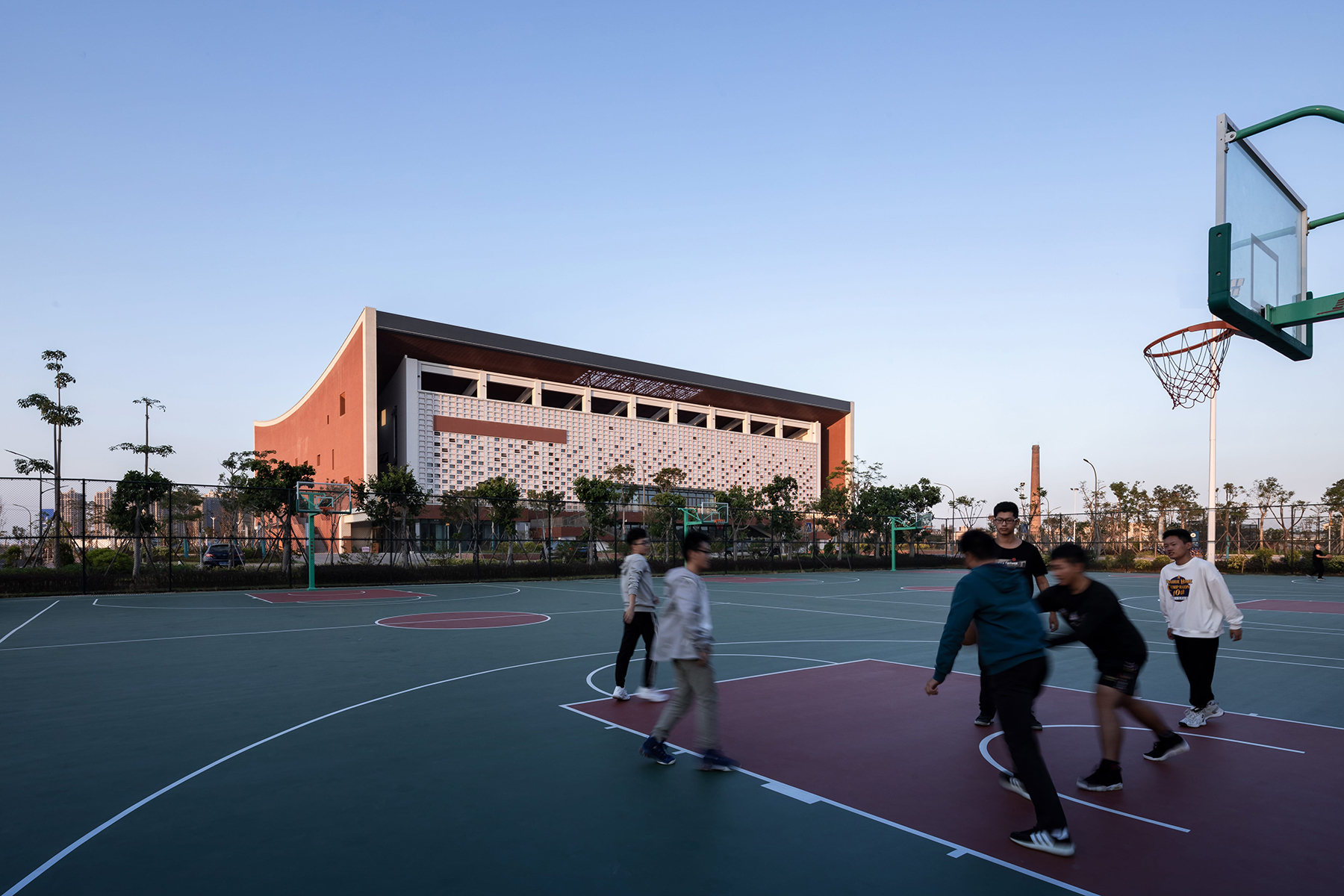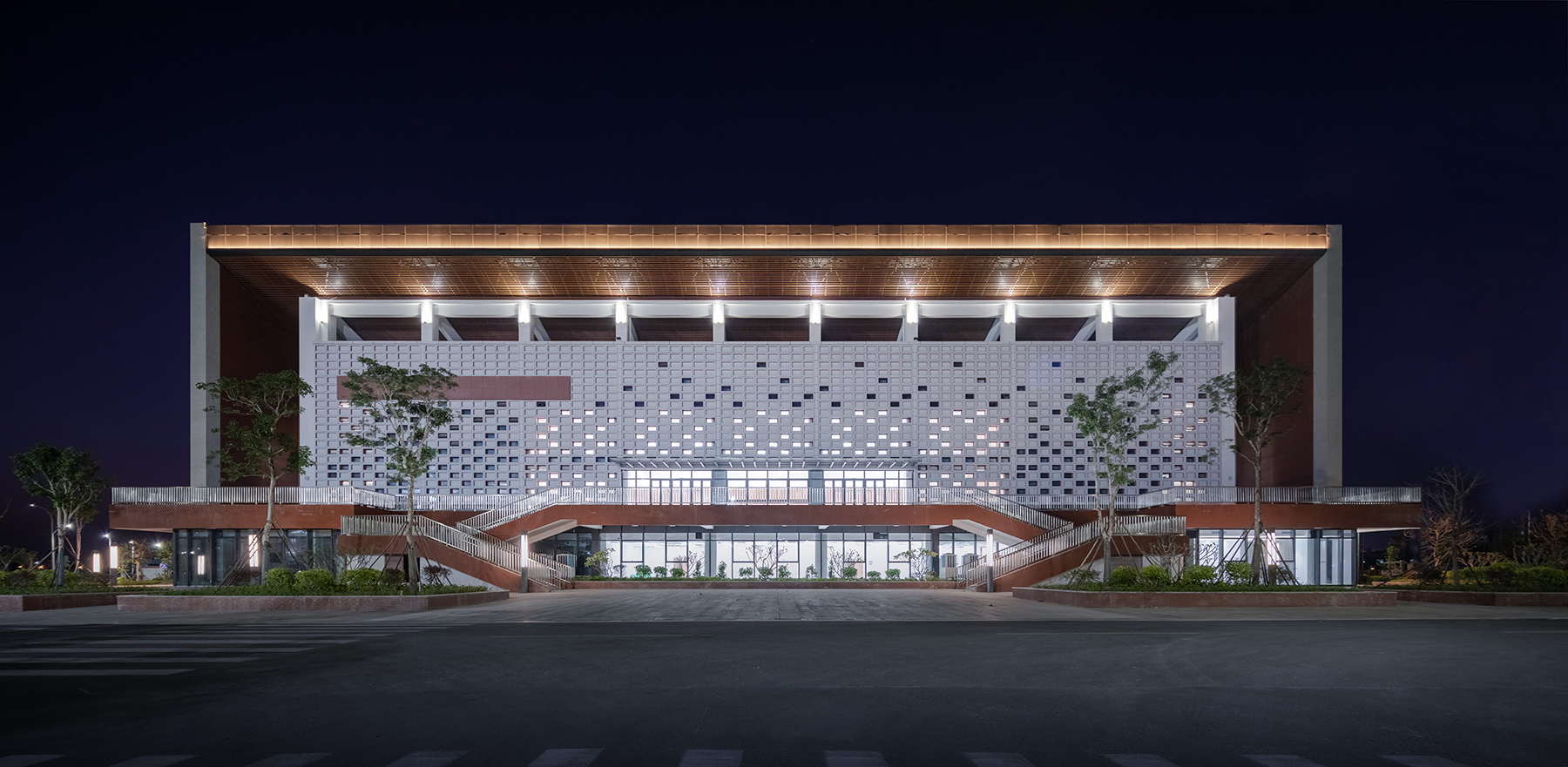Jinjiang is a beautiful coastal city famous for its ancient southern Fujian architecture. However, with the rapid development of urbanization, a large number of ancient “Cuo villages” have been destroyed. This has led to the gradual disappearance of this inherited traditional Chinese architectural form and its culture. The entire campus plan was inspired by the "Red Brick Cuo Village" preserved from the Ming Dynasty, which is constructed in a unique way with white stone embedded in red brick wall.
Even if you have never been to the traditional ancient villages along the coast of Jinjiang, it is not difficult to find from Google Maps that the planning structure of almost all villages has a rhythm like music, and the relationship between buildings is like a couple embracing and dancing in sync. It is this unique architectural arrangement that creates a series of growing organic structures, somewhat like the structure of a coral reef, where solids and voids are continuous and intertwined. The design philosophy of the entire campus also follows this natural space syntax, resulting in a breathing structure that integrates all buildings with the coastal park and diverse courtyards.


